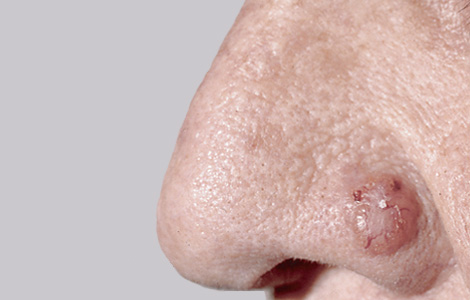Basal Cell Carcinoma Treatment
Basal cell carcinoma is the most common form of skin cancer. This accounts for more than 90% of all skin cancers in the United States. These cancers rarely metastasize (spread) to other parts of the body. They can cause damage by growing and invading surrounding tissue.
What does Basal Cell Carcinoma typically look like?
Any spot that easily bleeds, recurrently bleeds or grows rapidly, should be evaluated for the possibility of BCC.
What causes Basal Cell Carcinoma?
Light colored skin, and sun exposure are both important factors in the development of basal cell carcinomas. Approximately 20% of these skin cancers occur in areas that are not exposed to the sun such as the chest, back, arms, legs and scalp. The face is the most common location for basal cell lesions. Weakening of the immune system, whether by disease or by medication, can also promote the risk of developing basal cell carcinoma. Most skin cancers appear after the age of 50, but the sun�s damaging effects begin at an early age. It is important for protection to start in early childhood in order to prevent skin cancer later in life.
Treatment for Basal Cell Carcinoma:
There are many ways to treat basal cell carcinoma with a good chance of success of 90% or more. Our main goal is to remove or destroy the cancer completely with the smallest scar possible. In order to plan the best treatment for a patient, the doctor must consider the location and size of the cancer as well as the risk of scarring. The patient�s age, general health and medical history are also determining factors in the treatment of basal cell carcinoma.
Call today to schedule an appointment with Dr. Scott Friedman in order for them to assess your condition and determine which treatment would best benefit you.
